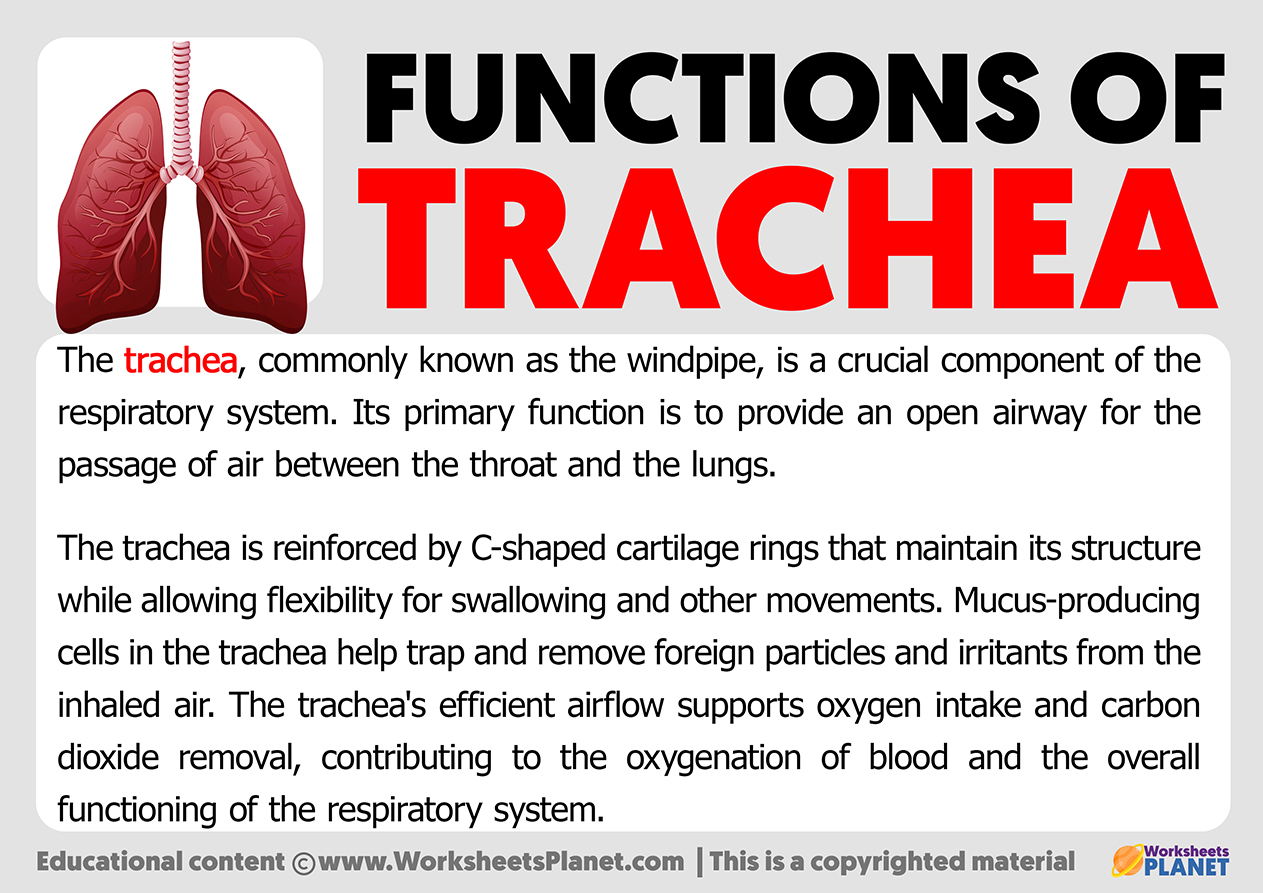The trachea, commonly known as the windpipe, is a crucial component of the respiratory system. Its primary function is to provide an open airway for the passage of air between the throat and the lungs.

The trachea is reinforced by C-shaped cartilage rings that maintain its structure while allowing flexibility for swallowing and other movements. Mucus-producing cells in the trachea help trap and remove foreign particles and irritants from the inhaled air.
The trachea’s efficient airflow supports oxygen intake and carbon dioxide removal, contributing to the oxygenation of blood and the overall functioning of the respiratory system.

